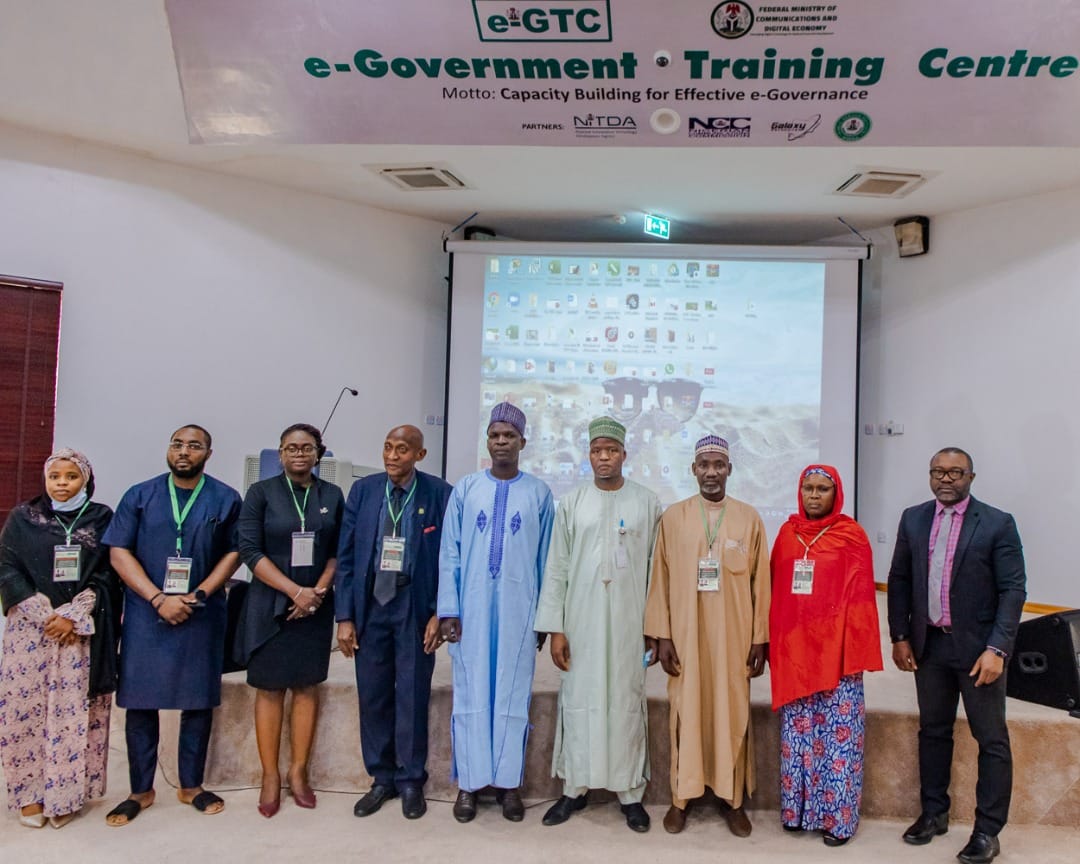The National Information Technology Development Agency (NITDA), through the Digital Transformation Technical Working Groups (DT-TWGs), has commenced a 5-day workshop with seven federal public institutions (FPIs) to enable seamless implementation of Nigeria’s e-Government Master Plan (Ne-GMP).
RELATED Buhari Sees EGovernment As Foundation Of Good Governance, Says Pantami
The agency’s Director General of NITDA, Kashifu Inuwa, said capacity building remains critical to achieving the country’s e-Government roadmap.
“To reduce the complexity associated with digital transformation and accelerate the achievement of expected values from the deployment of IT systems, digital technologies, innovations, and edge against the lack of strategic architecture, insufficient collaboration, integration, sourcing, or effective project management, NITDA in 2018 and 2019 developed the Nigeria e-Government Interoperability Framework (Ne-GIF) and Nigeria Government Enterprise Architecture (NGEA),” said the NITDA boss while declaring the workshop open.
Inuwa, who was represented by Director IT Infrastructure Solutions (ITIS), Dr Usman Gambo Abdullahi, recalled that the Ne-GMP was approved and launched by the Federal Executive Council (FEC) on the 24th of May 2019.
According to him, President Muhammadu Buhari, alongside the Minister of Communications and Digital Economy, Prof. Isa Ali Ibrahim Pantami, launched the National Digital Economy Policy and Strategy (NDEPS) for a Digital Nigeria at the opening ceremony of the eNigeria Conference, Exhibitions and Awards on November 28, 2019.
Inuwa noted that these two documents set clear directions for government digital transformation in Nigeria, which NITDA is taking strategic steps to implement.
Globally, the Enterprise Architecture (EA) is being utilised as a standard tool for implementing digital transformation plans and strategies, said Inuwa.
He added: “These documents form the foundation for taking government-wide IT deployment from silo-based to an integrated whole-of-government approach and ultimately an asset for digital government transformation.”
He explained that the seven layers of NGEA, which are Business, Service, Data, Application, IT Infrastructure, Security, and Performance are centred around people and processes, with each layer having high-level expectations for FPIs, and as well specified best practices, standards, tools, reference models, and recommendations that will help achieve the value propositions and citizens’ expectations for government digital services.
Hence, he said, NITDA, under the directives of the Federal Ministry of Communications and Digital Economy has embarked on many initiatives such as the NGEA/Ne-GIF National Implementation Committee comprising of about 40 critical FPIs representatives and IT industry players to govern and advise on government-wide digitisation of processes and functions, phased assessment of IT systems, Digital Services, and Capabilities for 200 FPIs to establish AS-IS situation analysis, and provided capacity for over 448 DT-TWG members across the 100 FPIs inaugurated earlier, and several others, in line with implementing the e-Government Master Plan.
“Digital Transformation calls for a rethink in how public institutions do business and deliver public value and experience to customers. Transformation cannot happen effectively on the outside unless it happens on the inside”, he noted.
Consequently, NITDA has taken another step to establish Digital Transformation Technical Working Groups in seven FPIs with the following responsibilities and expectations; to play the role of advocates for the digital economy and digital transformation-related activities, advise their management on adoption and utilization of digital technologies for business transformation and effective digital service delivery, guide automation and digitization of government business processes, provide support and guidance for initiation and implementation of IT projects.
The groups is also tasked with ensuring IT and government business alignment, propose and implement initiatives to enhance Government Digital Services (GDS), ensure GDS and IT projects implementation is in compliance with the provisions of NDEPS, Ne-GMP, IT Projects Clearance Policy and Guidelines, Ne-GIF, NGEA, NDPR, and other National ICT/e-Government documents, develop and implement their organization ICT plan and Enterprise Architecture (EA) including solution architecture for IT deployment, and perform any other functions that may be assigned by the Federal Government through the Federal Ministry of Communications and Digital Economy, and in line with the provision of NITDA Act 2007.
































